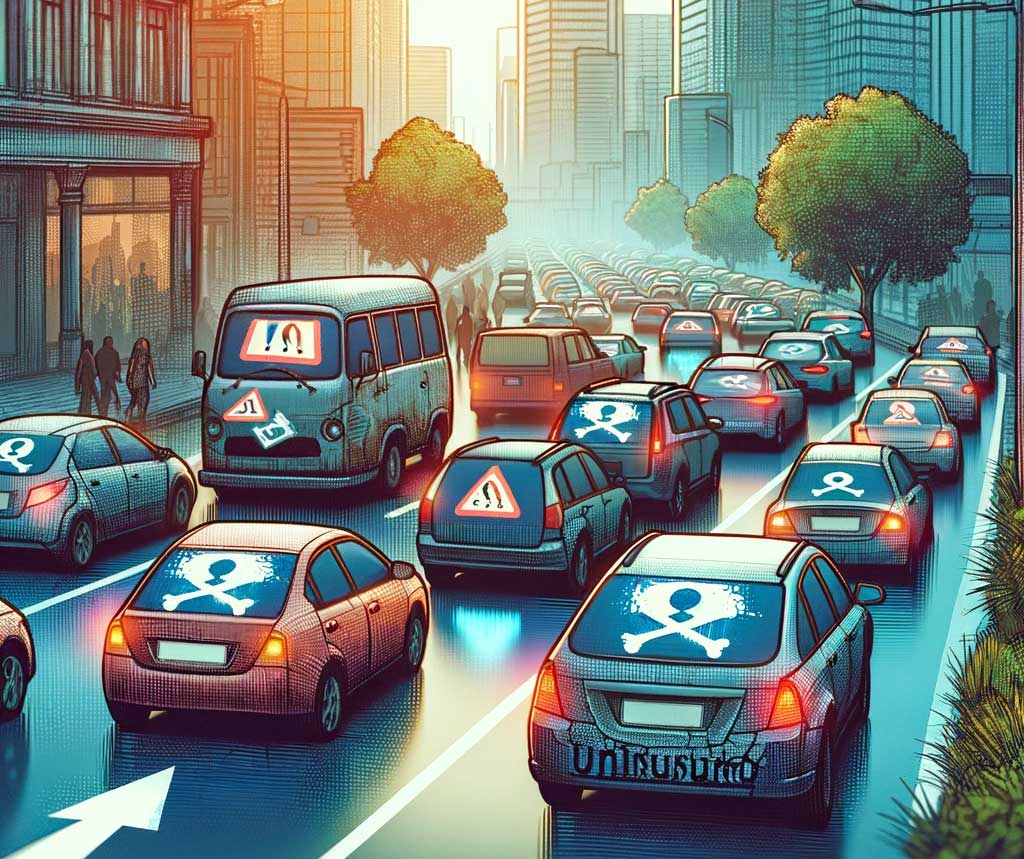Uninsured Motorist Coverage
Understanding LA Citizens Insurance: Everything You Need To Know

Mandatory Uninsured and Underinsured Motorist Coverage in Many States

In twenty states, plus the District of Columbia, vehicle owners are required to purchase uninsured and underinsured motorist coverage. This is to safeguard against potential injuries or property damage inflicted by drivers who either lack car insurance or possess insufficient coverage to cover medical expenses or the cost of repairing or replacing damaged property.
Insufficient Coverage by Insured Drivers
While every state mandates a certain level of liability insurance for motorists, aiming to protect others from injury or property loss, this coverage can be minimal. For instance, in some states, liability protection might be as low as $5,000 for injuries per person, $10,000 total for all injuries in an accident, and merely $5,000 for property damages. This means that even legally insured motorists might have coverage insufficient to cover the costs if they cause an accident resulting in significant injuries or damages.
Medical and property damage costs can easily surpass these state minimum liability limits. For example, a mere $5,000 in liability coverage for property damage can quickly be exceeded in scenarios involving significant vehicle repairs or damage to structures like homes or businesses.
States Mandating Uninsured and Under-Insured Motorist Coverage
The following table lists the states requiring uninsured and under-insured motorist coverage:
| Region | States |
|---|---|
| East | Connecticut, Maine, Maryland, Massachusetts, New Hampshire, New Jersey, New York, North Carolina, Rhode Island, Virginia, Washington D.C. |
| Central U.S. | Illinois, Kansas, Minnesota, Missouri, South Dakota, West Virginia, Wisconsin |
| West | Oregon |
Rising Number of Uninsured Drivers

Recent years have seen a sharp increase in the number of uninsured drivers, with some states reporting that over 25% of vehicles on the road lack any insurance coverage. This situation places many at risk, especially in accidents involving uninsured motorists, which is why nearly half the states now mandate coverage against such uninsured drivers.
'Uninsured' Status Even for Insured Drivers
In situations like hit-and-runs, where the responsible party cannot be identified, the uninsured motorist coverage applies. For instance, if a car is hit in a parking lot and the responsible party flees without reporting the incident, the offender is considered ‘uninsured’ for insurance purposes. Similarly, if an uninsured driver causes property damage, the uninsured motorist coverage provides financial relief to the victims.
Exploring the Impact of Uninsured and Underinsured Motorist Coverage
The necessity of uninsured and underinsured motorist coverage becomes evident when considering the financial implications of accidents involving drivers with inadequate insurance. In many cases, the costs associated with medical treatment, vehicle repairs, and property damage can escalate quickly, far exceeding the minimum coverage limits set by state laws. This gap in coverage highlights the importance of such insurance policies for added protection.
Financial Repercussions of Accidents Involving Underinsured Drivers
When an underinsured driver causes an accident, the victims often face significant financial burdens. The underinsured driver’s policy might cover only a fraction of the total expenses, leaving the victims to bear the remaining costs. This scenario is particularly distressing in cases involving severe injuries or substantial property damage, where the expenses can run into tens of thousands of dollars, if not more.
How Uninsured and Underinsured Coverage Works
Uninsured and underinsured motorist coverage steps in to fill these gaps. It provides compensation for bodily injuries and, in some policies, property damage, that the at-fault driver’s insurance does not fully cover. This type of coverage is crucial for ensuring that victims receive the necessary financial support to recover from an accident without the added stress of unmanageable expenses.
Legal and Safety Considerations

From a legal standpoint, the requirement for uninsured and underinsured motorist coverage reflects a commitment to public safety and financial responsibility. By mandating this coverage, states aim to mitigate the risks associated with uninsured drivers and ensure that all parties involved in an accident have access to adequate financial resources for recovery.
Moreover, this coverage plays a critical role in promoting responsible driving. Knowing that they are protected against the risks posed by uninsured and underinsured drivers, insured motorists can feel more secure on the road. This sense of security is especially important in states with high rates of uninsured motorists.
The Economic Context of Uninsured Driving
The rise in uninsured drivers is often linked to broader economic factors. In times of financial hardship, individuals may opt to forgo insurance to save money, not fully appreciating the potential costs of being involved in an accident without coverage. This decision can have far-reaching consequences, not only for the uninsured driver but also for others on the road.
Insurance Industry Response
The insurance industry has responded to the challenge of uninsured and underinsured motorists in various ways. Some companies have developed specialized policies to offer more comprehensive coverage options. Others have focused on educating consumers about the risks of driving without adequate insurance and the benefits of having uninsured and underinsured coverage.
Conclusion
In conclusion, the requirement for uninsured and underinsured motorist coverage is a critical aspect of road safety and financial responsibility. As the number of uninsured drivers continues to rise, this coverage becomes increasingly important for protecting motorists from the potentially devastating financial impact of accidents. By ensuring that drivers have access to adequate coverage, states and insurance providers play a vital role in promoting safer roads and more responsible driving practices.